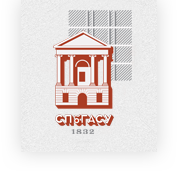The Application of Mixed Media in Painting and a Comparison of Visual Effects
DOI:
https://doi.org/10.63313/ah.9008Keywords:
Mixed Media, Painting, Visual Perception, Aesthetic Effects, Materiality, IntermedialityAbstract
This research investigates the strategic integration of mixed media techniques in painting and its impact on visual effects and viewer perception. It addresses the research question of how different mixed media approaches comparatively achieve specific aesthetic outcomes, considering their advantages and disadvantages. Building upon the historical evolution of mixed media and theoretical frameworks of materiality and intermediality, the study identifies and categorizes common mixed media techniques used in painting. It analyzes the visual effects produced by specific media combinations, such as texture, color, and depth, and investigates how these techniques influence viewer perception and emotional response. The research employs a comparative analysis to evaluate the strengths and weaknesses of different approaches in achieving aesthetic goals. Addressing gaps in existing research, which often lacks a comprehensive comparative analysis and empirical data on viewer perception, this study provides a systematic investigation of mixed media in painting. The expected results include a categorization of techniques, a detailed analysis of visual effects, empirical data on viewer response, a comparative framework for evaluating approaches, and practical guidelines for artists. Ultimately, this research contributes to a deeper understanding of the aesthetic and conceptual potential of mixed media in contemporary painting.
References
[1] Arnheim, R. (2004). Art and visual perception: A psychology of the creative eye. University of California Press.
[2] Arnheim, R. (1974). Art and Visual Perception: A Psychology of the Creative Eye. Univer-sity of California Press.
[3] Arnason, H. H. (1998). History of Modern Art. Harry N. Abrams.
[4] Baudrillard, J. (1994). Simulacra and Simulation. University of Michigan Press.
[5] Classen, C. (2007). Sensing the past: Seeing, hearing, smelling, tasting, and touching in his-tory. Routledge.
[6] Crowther, P. (2002). The Language of Twentieth-Century Art: A Conceptual History. Yale University Press.
[7] Daix, P. (1993). Picasso: Life and Art. Thames & Hudson.
[8] Danto, A. C. (1981). The Transfiguration of the Commonplace: A Philosophy of Art. Har-vard University Press.
[9] Danto, A. C. (1981). The Transfiguration of the Commonplace: A Philosophical Look at Art. Harvard University Press.
[10] DeWilde, D. (2012). The Complete Guide to Mixed Media Painting. North Light Books.
[11] Dietrich, D. (1993). The Collages of Kurt Schwitters: Nothing is Rejected. Thames and Hudson.
[12] Drobnick, J. (2004). The smell culture reader. Berg Publishers.
[13] Elkins, J. (1999). The object stares back: On the nature of seeing. Simon and Schuster.
[14] Elkins, J. (1999). The Object Stares Back: On the Nature of Objects. Simon and Schuster.
[15] Foster, H. (2004). Art Since 1900: Modernism, Antimodernism, Postmodernism. Thames & Hudson.
[16] Foster, H. (1996). The return of the real: The avant-garde at the end of the century. MIT Press.
[17] Foster, H. (1996). The Return of the Real: The Avant-Garde at the End of the Century. MIT Press.
[18] Goguen, L. (2004). Art, Perception, and Reality. Cambridge University Press.
[19] Gombrich, E. H. (1960). Art and illusion: A study in the psychology of pictorial representa-tion. Phaidon Press.
[20] Gombrich, E. H. (1960). Art and Illusion: A Study in the Psychology of Pictorial Represen-tation. Phaidon Press.
[21] Grau, O. (2003). Virtual art: From illusion to immersion. MIT Press.
[22] Heller, E. (2000). Psychology of color: How colors influence perception, art and design. Watson-Guptill.
[23] Ingold, T. (2007). Materials against materiality. Archaeological Dialogues, 14(1), 1-16.
[24] Katz, D. (1989). The world of touch. Lawrence Erlbaum Associates.
[25] Katz, D. (1989). The world of touch. Lawrence Erlbaum Associates.
[26] Kemp, M. (1990). The Science of Art: Optical Themes in Western Art from Brunelleschi to Seurat. Yale University Press.
[27] Kemp, M. (2011). The Science of Art: Optical Themes in Western Art from Brunelleschi to Seurat. Yale University Press.
[28] Kester, G. H. (2011). The one and the many: Contemporary collaborative art in a global context. Duke University Press.
[29] Klee, P. (1961). Notebooks, Vol. 1: The Thinking Eye. Lund Humphries.
[30] Krauss, R. (1985). The Originality of the Avant-Garde and Other Modernist Myths. MIT Press.
[31] Krauss, R. E. (1993). The Optical Unconscious. MIT Press.
[32] Lambert, S. (2013). The sustainable artist: An inspirational guide to positive change. A & C Black.
[33] McLuhan, M. (1964). Understanding Media: The Extensions of Man. McGraw-Hill.
[34] Merleau-Ponty, M. (2002). Phenomenology of perception. Routledge.
[35] Nochlin, L. (1971). Why Have There Been No Great Women Artists? In Women, Art, and Power: Essays. Thames & Hudson.
[36] Rajewsky, I. O. (2005). Intermediality, intertextuality, and remediation: A literary perspec-tive on intermediality. Intermédialités, (6), 43-64.
[37] Rosenthal, S. (2003). Mixed Media Painting Workshop. Rockport Publishers.
[38] Seitz, W. C. (1961). The Art of Assemblage. The Museum of Modern Art.
[39] Smith, R. (2008). The Art of the Contemporary. University of Chicago Press.
[40] Smith, R. (2005). The Artist's Handbook. Dorling Kindersley.
Downloads
Published
Issue
Section
License
Copyright (c) 2025 by author(s) and Erytis Publishing Limited.

This work is licensed under a Creative Commons Attribution-ShareAlike 4.0 International License.















